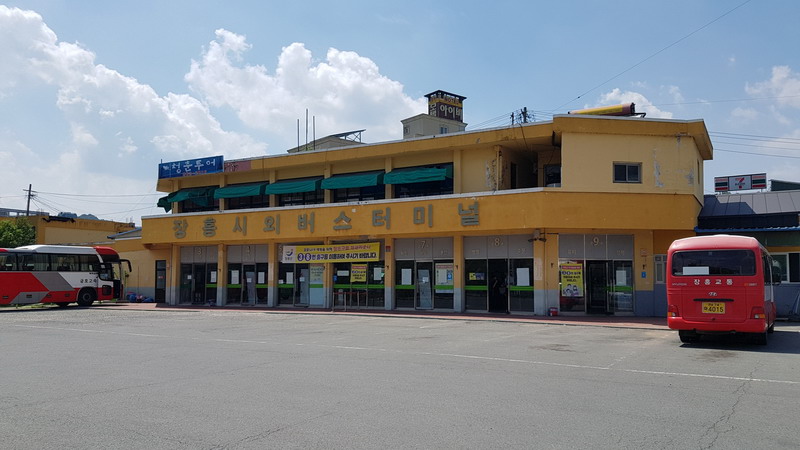Destination: Jangheung, June 19−20, 2021
By Richard Pennington.
As if to prove that my days as an American-Korean traveler are not over, I went to Seoul’s express bus terminal on Saturday morning, bellied up to the counter, bought a ticket to Jangheung, and hit the road. About 320 kilometers later, we arrived. I paid 50,000 won for one night at the Ivy Hotel and ascertained that the air conditioning worked; the summer solstice was two days away, and Korea’s southwest corner had begun to heat up.
I found a couple of tourist brochures and noted that this city of 40,000 has a catchy slogan – “Jangheung, a town like a mother’s warm hug.” Whatever PR man came up with that deserves a raise. The Tamjin River, which bisects Jangheung, is clean enough for swimming because I saw a number of kids cavorting in it. Among the annual events I missed were a marathon, the Mountain Azalea Festival, the Water Festival, and the Buckwheat Flower Festival.
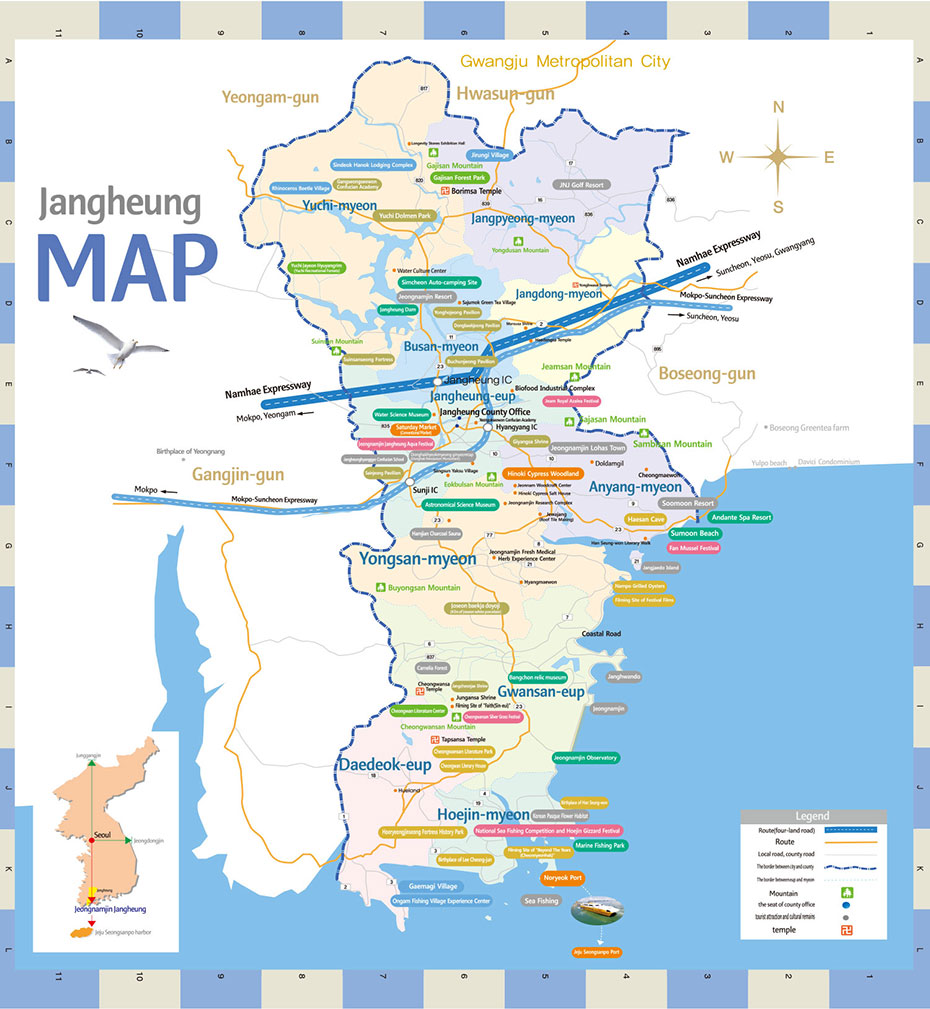
While cruising through the Jeongnamjin Saturday Market, I encountered a lady in red whose job it was to sell produce. She had no qualms about saying hello to the rare foreigner (I saw almost no others during this trip), and she soon brought me to another lady across the way. There I was talking to both of them, asking about Cypress Woodland, a place highly recommended by some friends in Seoul. We were having trouble communicating when a third lady, walking by with her teenage daughter on her arm, turned and asked if she could help. I said with delight that she could, and the other two went back to peddling vegetables and fish.
Kim Kyeong-hee, to whom I gave a signed copy of book number 23, is a 44-year-old government officer. Understanding my desired destination, she called a taxi, told the guy where I wanted to go, and got an estimate of the cost (7,000 won). Before I entered his cab, Kyeong-hee informed me that she was available if further help was needed.
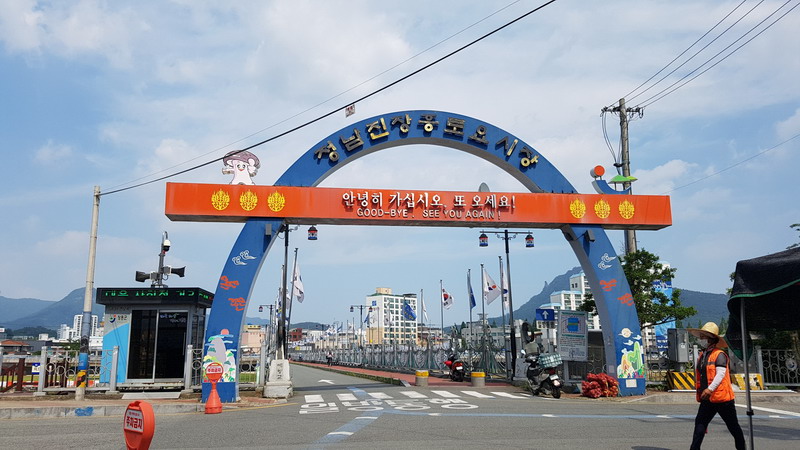
I spent less than an hour at Cypress Woodland. It consisted of a forest with hilly paths, log cabins built with eco-friendly materials, a cypress sawdust sauna, a botanical garden, and other facilities. Sure, there were lots of trees, and I trust that the air abounded with health-promoting anions and phytoncides. But I failed to perceive just why the place had won so much fame. Truthfully, I needed a Korean guide.
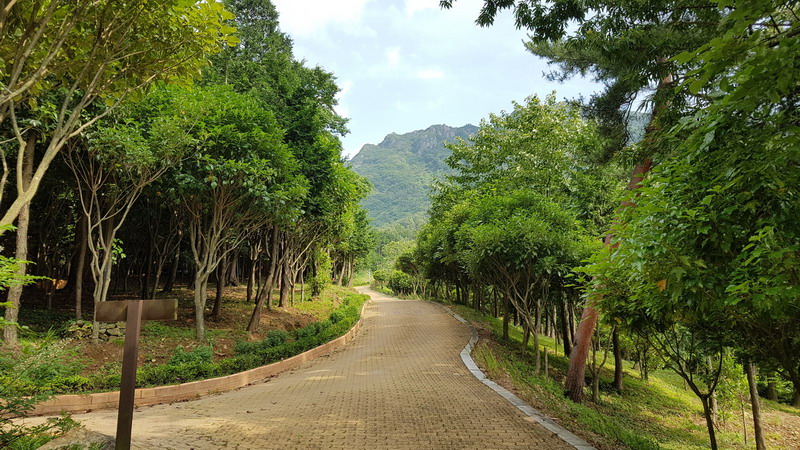
Back in the city, I walked everywhere, sometimes traversing the same streets repeatedly. I watched a woman tend her garden between a couple of aging apartment complexes. She took no note of me, but I wondered, “Who is she? Has she been here long? Does she have a family?”
Somewhat overheated, I was happy to find a sikdang (restaurant) that was cool, a waiter with a hearty smile, and galbi-tang on the menu. I pointed at it and exclaimed, “Galbi-tang, my dear sir!” While consuming this tasty meal, I perused the photos I had taken at the Jeongnamjin Saturday Market and Cypress Woodland, and talked to Kyeong-hee on the phone. This kind hostess – born in Gwangju but a resident of Jangheung for the past 17 years – offered to escort me on Sunday. We agreed to meet in the parking lot of the Ivy Hotel at noon.
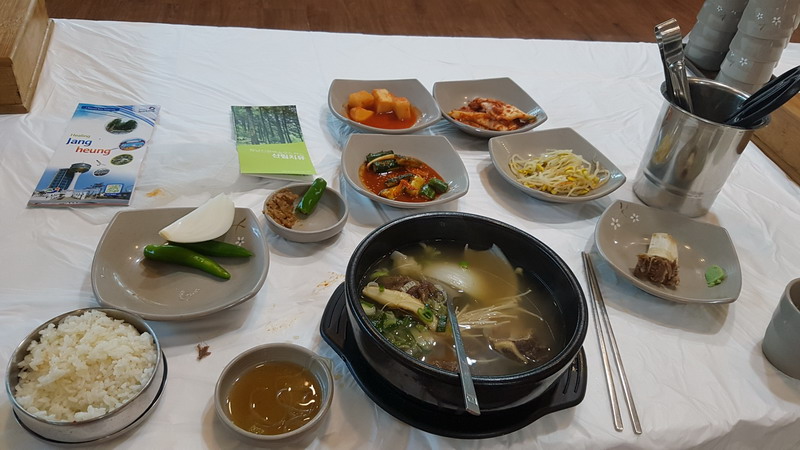
The remainder of Saturday consisted of more strolling the streets, a bit of shopping, and reading Robert Caro’s 1974 Pulitzer Prize-winning biography of Robert Moses at the hotel.
I got up the next morning after almost 11 hours of much-needed sleep and found a Paris Baguette two blocks away. Around 9 a.m., I was nursing a café latte, chewing on a bagel, and reading about Moses when Kyeong-hee came traipsing in! This was quite a coincidence. She was there to buy sandwiches for a group to which she belongs – people studying to pass an exam for landscaping certification.
Three hours later, at the wheel of her white Hyundai, Kyeong-hee asked me where I wanted to go. I had a specific place in mind: Haedong-sa, a shrine dedicated to patriotic martyr An Jung-geun. In 1909, this native of Haeju (now part of North Korea) had chopped off the tip of one finger to indicate his determination to get revenge on the colonizing Japanese. He disguised himself as one of them and made his way to the platform at Harbin Railway Station. Equipped with a pistol, he plugged Ito Hirobumi, former Resident-General of Korea, and sent him to the cemetery. An yelled “Long live Korea!” and started waving the Taegukgi. Taken into custody on the spot, his conviction and execution were all but certain. An, a member of an armed Korean resistance group, demanded to be treated as a prisoner of war. The judge brushed this aside, and he was hanged on March 26, 1910. His grave has never been found.

It was Kyeong-hee’s first visit to Haedong-sa, and we learned a lot together. For one thing, this shrine opened in 1955 adjacent to Mansu Temple with President Syngman Rhee in attendance. At the ceremony that day, An’s daughter carried his portrait and his cousin’s son carried his enshrinement tablet. A memorial ritual is performed there every March 1.
Kyeong-hee and I got back into her car and headed to Borim-sa, a Buddhist temple dating back to the late Silla Dynasty. During that ten-minute drive, we passed Eokbul-san, a mountain with a strange formation halfway up. It is a boulder called Daughter-in-Law Rock, which supposedly bears a likeness to the Maitreya, a bodhisattva who will someday appear on Earth, achieve complete enlightenment, and teach the pure dharma.
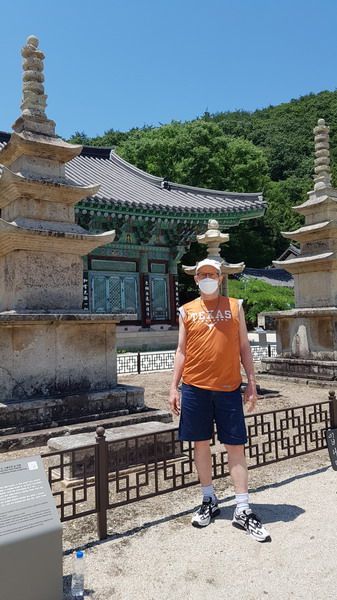
Borim-sa, set low on Gaji Mountain, is quite significant in Zen Buddhist lore. So, I was more than a little surprised to see no historical plaque out in front. Some of the buildings did have such markers, but the main one did not. Strange. My own research, however, revealed that Iryeon (1206−1289), the primary author of Samguk-yusa, studied at this temple. Samguk-yusa is a collection of folk tales, legends, and biographies from early Korean history. (Jangheung takes pride in its literary heritage, including other writers such as Baek Gwang-hong, Song Gi-sook, Yi Chong-jun, Han Seung-won, and Lee Seung-u.) In the center of Borim-sa was a spring, the water of which was said to be good for the skin, prevent cancer, and aid digestion. What the heck – I took one of the ladles and drank deeply.
A kind man outside had some Buddhist-oriented things for sale, and I spent 10,000 won on three packages of lotus-leaf cookies. I handed one to Kyeong-hee. She took me back to Jangheung’s bus terminal, where we had a fond farewell. Unfortunately, I left the other cookies there. Perhaps the Awakened One would say this was my gift – however unintended – to some other traveler.
Photographs by Richard Pennington.







